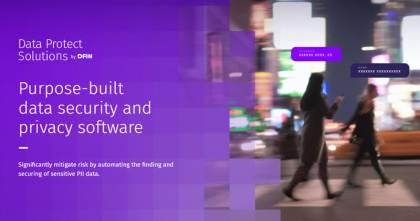When you have sharper insights into your data management practices, including visibility into where your data resides, your organization is better positioned to mitigate data security risks. This article will outline the latest data security trends and offer data visibility strategies for organizations.
Data management — the core of a strong cybersecurity program — requires robust governance policies and procedures on the collection, use, storage, and sharing of data. This includes ensuring that data is accurate, consistent, and secure — and that data management complies with relevant regulations and legal obligations.
Also important is data resiliency, the ability to recover and continue operations in the event of a disaster or cyberattack that could result in data loss. This requires a comprehensive disaster recovery and backup plan that is regularly tested to ensure that critical data can be restored quickly and efficiently.
Effective data governance is essential for data resiliency, as it establishes clear guidelines for data management and helps to identify and mitigate potential risks and vulnerabilities.
Getting Better Visibility into Your Data
But it all starts with data visibility. “Where does our data reside?” is a key question to ask of your organization. While it may sound simple, the answers can be complicated, especially considering the unprecedented amounts of data that IT teams are required to manage.
In addition, data may live on-premises and off-premises, throughout the IT infrastructure, devices (smartphones, laptops), file servers, applications, third-party suppliers, and the cloud. When data is dispersed, it’s harder to keep track of it.
With heaps of data to manage, including data that may not be well tended to or forgotten, such as dark data (information that a company stores but no longer needs), in-house teams are already stretched.
Businesses are often surprised by just how much of dark data they have squirreled away — out of sight and out of mind for companies. Think emails, HR records of former employees, presentations. Yet these dark data reservoirs are often attractive to hackers. If dark data is exposed during a ransomware attack or leak, it could have negative consequences for your business.
A recent DFIN DealMaker Meter focused exclusively on dark data: Understanding Risk: The Dark Side of Dark Data. You can also read more about the risks here.
How to Improve Data Visibility
Gaining better insight into what data you have and where it resides can help you take a more strategic and proactive approach to data protection, mitigate risks, and enhance overall cybersecurity.
One way to improve data visibility is through inventorying or data mapping, which involves creating an inventory of all data that an organization collects, processes, and stores. This includes data that is stored on-premises, in the cloud, or by third-party vendors and suppliers. Once the data is mapped, organizations can identify any gaps in their data protection and compliance strategies and take steps to address them.
Organizations can also use data discovery tools to gain visibility into where their data resides. These tools scan an organization's network and systems to identify all data sources and provide detailed information on the location, type, and sensitivity of the data. This information can be used to better understand the organization's data landscape, improve data security, and ensure compliance with relevant data regulations.
Data visibility is just the first step. Once you have located your data, you must secure it, implementing strategies including a patching discipline, identity management, multi-factor authentication, anti-malware software, and employee cybersecurity training.
Organizations must remain vigilant and proactive to keep up with the constantly evolving threat landscape. In addition, understanding your regulatory and legal data obligations remains critical, especially as U.S. global data regulations and laws continue to expand and evolve. This can also help organizations identify potential risks and vulnerabilities and proactively address them, improving overall security posture, data management insight, and resilience.
Whether it is navigating the cybersecurity landscape or the data regulatory landscape, DFIN can help. For more insights into today’s data security landscape and risk mitigation strategies, read here.

